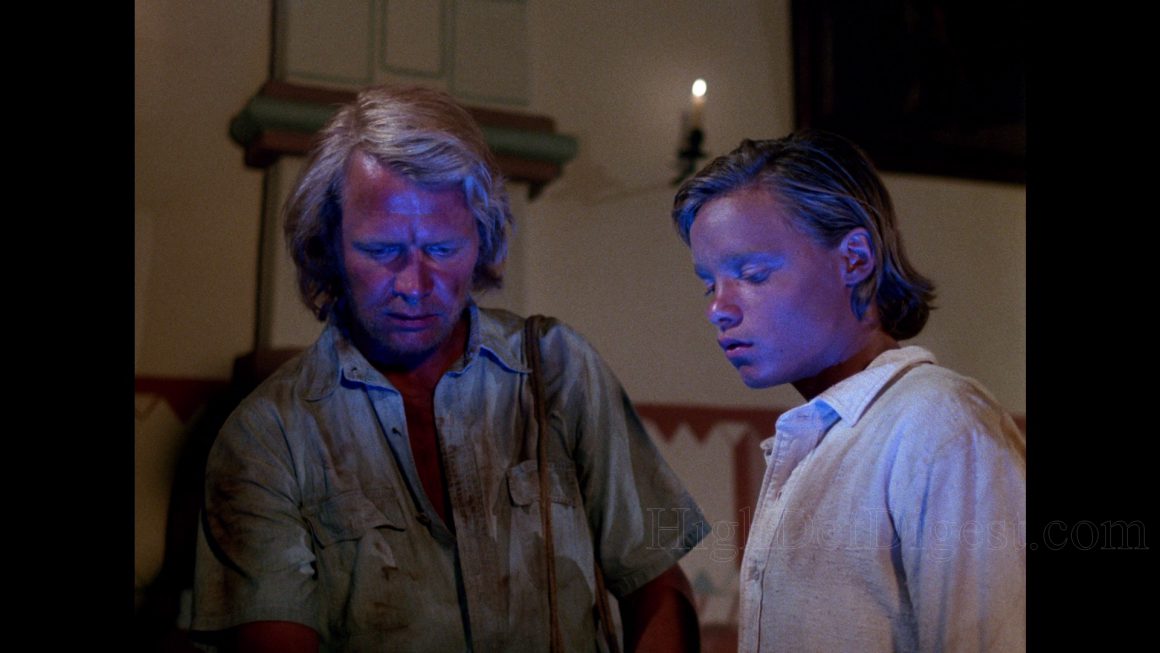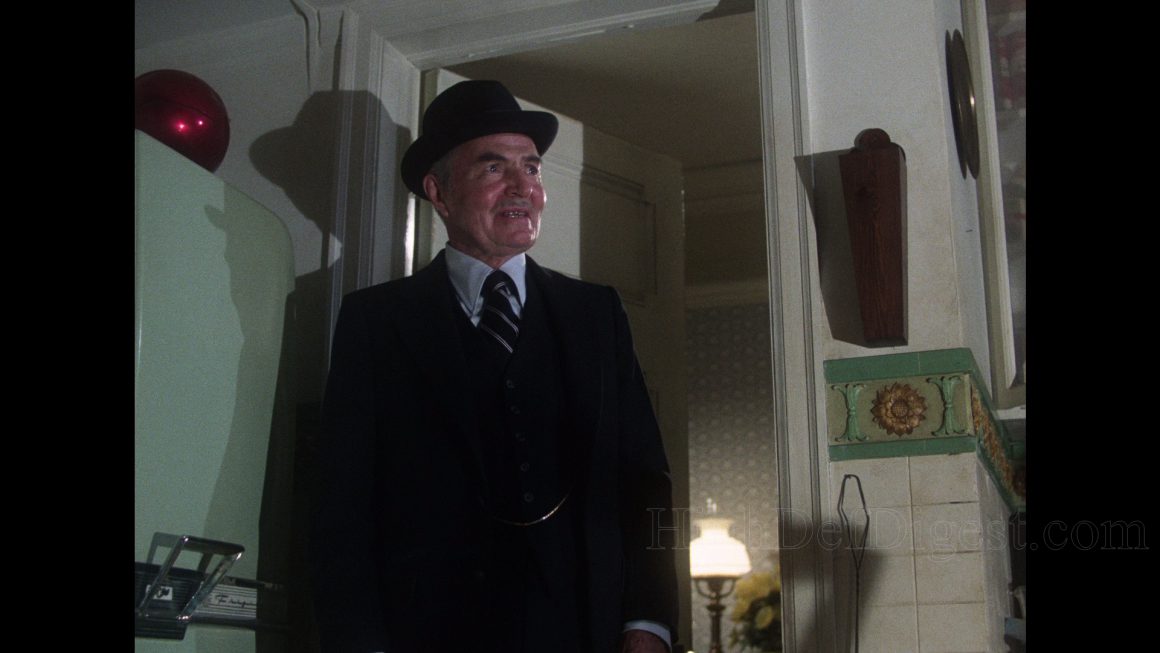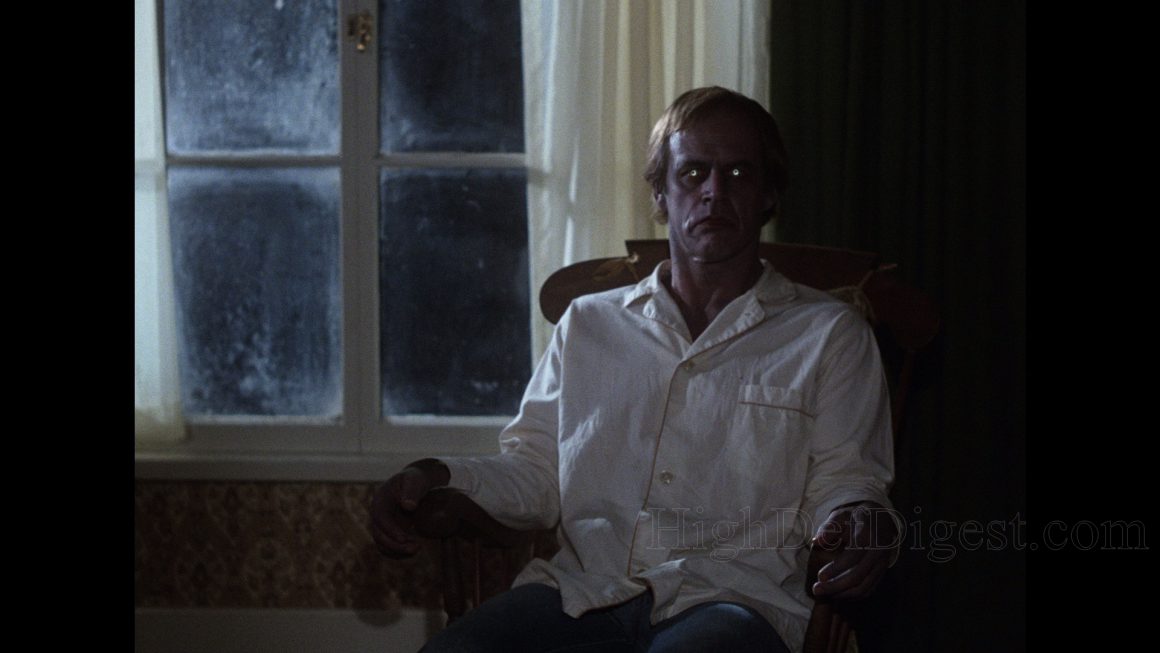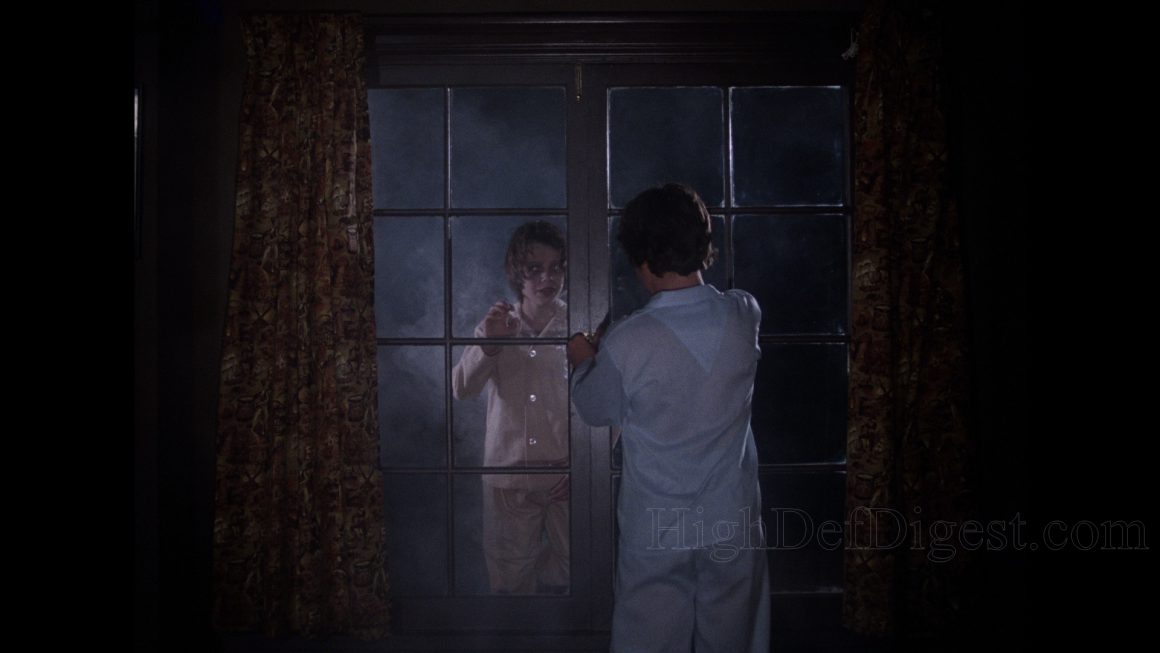Salem’s Lot (1979)
Release Date: November 17, 1979
Synopsis (from IMDb) – “A novelist and a young horror fan attempt to save a small New England town which has been invaded by vampires.”
Click here to buy Salem’s Lot from Amazon
Welcome to the fourth part of my ongoing series A King’s Ransom, a series of articles that will look at the full Stephen King library, including re-reading all his books and watching all the movies based on his writing. Click here to catch up on A King’s Ransom.
Salem’s Lot Movie Review
Directed by Tobe Hooper
Written by Paul Monash
Cast: David Soul, James Mason, Lance Kerwin, Bonnie Bedelia, Lew Ayres, Julie Cobb, Elisha Cook Jr., George Dzundza, Ed Flanders, Geoffrey Lewis, Kenneth McMillan, Fred Willard, Marie Windsor
In 1974, Tobe Hooper set the horror world on fire with his movie Texas Chainsaw Massacre. It looked like Hooper would add his name to the growing list of horror greats like George Romero and John Carpenter. However, he followed it up with the lackluster Eaten Alive and in 1979 was making a made-for-TV miniseries based on a novel by a young, fresh horror author.
That novel was Stephen King’s Salem’s Lot and his movie – a three-hour television event – remains beloved by many of King’s fans almost 40 years since it first aired on CBS.
Revisiting the movie, 38 years after its release, shows that the final product was a mixed bag. The film itself has scary moments, and the pacing is quite good for a television miniseries. However, there are also many things that really hold this effort down from being an all-time classic.

When adapting this for television, writer Paul Monash took the sprawling novel of a New England town overrun by vampires and condensed the characters into a small handful of characters. One problem with the book was that there were so many characters that it was often easy to confuse them. That is because King wasn’t making a novel about vampires and a hero to fight them but was making a story about a town with problems already poisoning it, one that never saw its own death coming.
By limiting the characters and making this movie all about a hero to fight the vampires, Hooper directed a film that (much like The Shining), changed the focus of the movie from the town to a small character-driven horror story.
The hero, in this case, is author Ben Mears. Just like in the book, Mears came back to the town he lived in as a child and wanted to use the old Marsten House as a muse for his new novel. The backstory is the same in the movie and book – Mears went into the Marsten House as a child on a dare and saw a vision of Hubie Marsten hanging by his neck – Hubie being a man who died there many years before.
Also, just like in the novel, two men beat Ben to the town and buy the house for themselves – antique dealers named Richard Straker and Kurt Barlow. While a few people had seen Straker, Barlow had yet to arrive in town.

Where the movie changes things up is with the townspeople, many of whom the film combines into different characters. One example is the story of Bonnie Sawyer, a housewife who is cheating on her husband with an electrician named Reggie. In the movie, Bonnie is cheating on her husband with realtor Larry Crockett.
Other characters, such as town gossip Audrey Hersey, teenage mother Sandy, and the school bus driver Charlie Rhodes were omitted from the movie altogether (the latter of which was a huge loss as his demise in the novel was a scene that could have been hugely frightening in the movie).
That worked well to streamline the movie, but it also made this more about Ben and shortchanged characters that played an essential role in the movie. One misstep was to eliminate the young doctor Jimmy Cody and combine his character with Susan’s dad. Another disappointment was to make Father Callihan almost an afterthought in the movie. It was also disappointing to see Jason Burke, such an important character from the book, dismissed so quickly in the movie. Finally, Mark himself was almost thrown in at the end, although his skills and importance were hinted at early in the movie.
The movie also chose to ignore the entire mystery of the vampires and where they were hiding, and just went with the easy way out at the end.

There were problems with the lighting of the movie, as well as the obvious commercial breaks and the really rough editing where a monster attack was freeze-framed in a very cheesy manner. However, those were a sign of the times and can be overlooked. What can’t be ignored is the acting.
David Soul (best known for his Starsky & Hutch) days was decent as Ben Mears. James Mason as Straker, Bonnie Bedelia as Susan and Lew Ires as Jason Burke were also highlights. However, there were many instances of horrible acting that really pulled me out of the movie.
Geoffrey Lewis, who had 16 years of television acting experience before he took on the role as Mike, was hugely disappointed in the movie. Elisha Cook Jr., an actor with roles in legendary films like Rosemary’s Baby, The Big Sleep, The Maltese Falcon, and Shane, was terrible as Weasel, a character with importance in the book that was a joke in the movie.
Barney McFadden played Ned Tibbets, and his death scene included a freeze-frame that left his ridiculous final facial expression as something that I can’t unsee and made his death a complete laugh when it should have been horrific.
These moments lie almost more at the feet of Tobe Hooper than at the feet of the specific actors. Hooper directed them in these scenes and knew he was going to use close-ups and freeze-frames and still made them as ridiculous as possible. They were laughable but not in a good way that eased tension in a horror movie.

It also has to be pointed out that some of the moments, like when the Petrie house began to shake like an earthquake before Barlow showed up made no sense for a vampire movie. It was like Hooper had never seen a vampire movie before making this.
Susan’s fate also bothered me in the movie. Remember, in the book, Ben opened the casket expecting to find Barlow, but Susan was there already turned. He had to kill her and then figured out that Barlow was hidden somewhere else. In the movie, there was no mystery and Barlow was there.
Instead of returning years later to burn down the house, Ben did it then and there. However, since Barlow and his vampires had yet to awaken that night, it meant Susan was not yet turned – which meant that Ben killed her when he burned down the house. The movie doesn’t really touch on that but it is the only explanation. Add that to the fact that the movie never did explain what happened to Father Callihan and there were too many unanswered questions for a three-hour movie.
That is a lot of complaints about the Salem’s Lot miniseries, and they are all legitimate complaints. However, somehow, despite the bad acting, questionable special effects and the story lacking what made the novel great, Salem’s Lot ends up as an entertaining and engrossing horror movie.
As much as Tobe Hooper does wrong, he does just as much right when it comes to creating a horror flick that sucks in the viewer and keeps them engrossed, despite the three-hour running time. A product of its time, fans should cut Salem’s Lot a break on the bad production values and look past the bad acting because, beneath it all, this is a horror movie worth watching.
Next week, I will look at the 1977 Stephen King novel The Shining.





